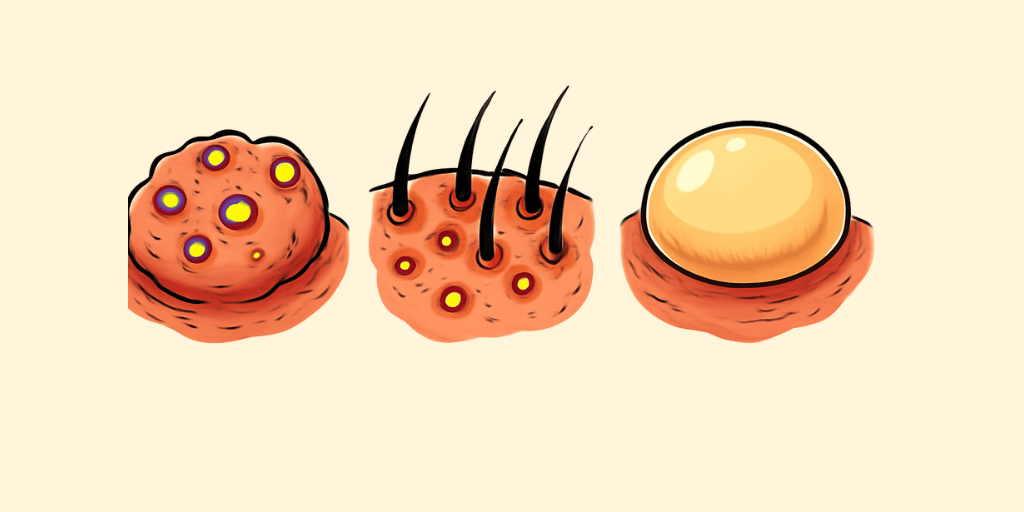Ayurvedic Name: Visphot
Description:
Characterized by large, pus-filled boils, painful blisters, and eruptions, often resulting from Pitta and Rakta imbalance. The affected area may be red, swollen, and hot to the touch, resembling Folliculitis, Carbuncles, or Bullous Dermatitis in modern medicine. Ayurvedic management includes Neem, Guduchi, Sariva, and Haridra (Turmeric) for detoxification, along with Raktamokshana (Bloodletting) and lepa (pastes) made from Neem and Haritaki.
Signs & Symptoms:
Visphot is marked by Kushta (Skin Lesions), Rukshata (Dryness), Shotha (Swelling), Kandu (Itching), and Agnimandya (Poor Digestion).
Diagnosis:
Clinical Examination and Blood Culture
Risk Factors:
- Dietary Factors: A diet high in sugars, unhealthy fats, and low in fiber can contribute to Visphot (pustular skin diseases). Consumption of overly spicy or fried foods can exacerbate inflammation in the skin, leading to breakouts.
- Lifestyle Factors: Poor skincare routines, lack of sleep, and stress can worsen Visphot. Exposure to environmental toxins and dehydration can also contribute to the condition.
Complications:
- Skin Eruptions (Visphot): Rapid spreading of skin eruptions or boils, causing discomfort.
- Fever (Jwara): Increased body temperature due to skin infections or inflammations.
- Redness (Rakta Pitta): Inflammation causing redness in the affected areas.
Epidemeology:
Visphot (Pustular Skin Diseases) is caused by bacterial or viral infections that lead to the formation of pustules on the skin. It is more prevalent in individuals with a history of skin conditions or those exposed to harsh environmental conditions.

